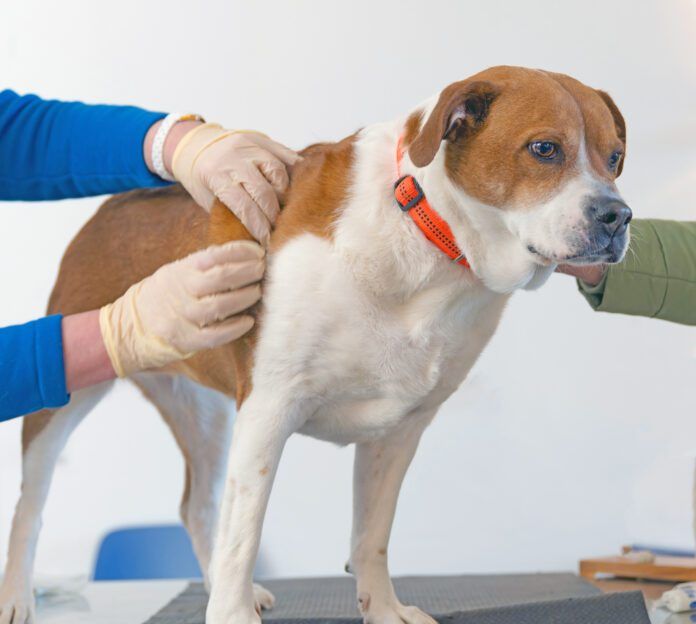Many older dogs get skin tags, just as older people do, and don’t need veterinary attention. Even a black skin tag on a dog is usually harmless, although sometimes people opt for dog skin tags removal for cosmetic reasons. An exception to the harmless rule of thumb is a skin tag on the dog’s eyelid.
Skin tags on a dog’s eyelid may require veterinary intervention. In that location, skin tags may rub on or irritate the cornea, leading to eye discharge and/or corneal abrasion. If you notice the dog’s eye seems red or your dog is rubbing the eye, you should check with your veterinarian immediately.
Technically, skin tags are fibrovascular papillomas. They are most commonly seen on Poodles, Cocker Spaniels, and Miniature Schnauzers or mixes of these breeds. The color of the dog’s skin tag may vary with the skin that the tag grows out from.
Skin Tag or Tick
Skin tags and ticks on your dog can appear similar, but ticks are generally brown with a reddish or gray tint, while skin tags tend to be the same color as the dog’s skin. If need be, use a magnifying glass and look for legs on the spot. If you see legs, it’s a tick, and it should be carefully removed.
Dog Skin Tag Removal at Home
While few skin tags require removal, none should be removed by you at home. Removal could be painful, bloody, and leave an open sore that could require a veterinary visit and antibiotics.
Unless a dog’s skin tag is in an area where it gets irritated and may ulcerate – such as around a collar – they are usually left alone. Do a monthly exam of your dog to keep an eye on changes in any skin tags. Growth, irritation, ulceration, and chewing or licking at an area are reasons to get a quick vet check.
If your veterinarian has any concern about a skin tag, she will do a needle biopsy or remove the tag. Removal can be done surgically, with laser, or via electrocautery. If your dog is having anesthesia for another reason, you can ask your veterinarian to remove any skin tags that bother your dog (or you), although it will be an extra fee. See also “Finding a Mole on Your Dog” and “Skin Lesions and Cancer.”
What Is That Skin Thing?
| Skin Lesion | Appearance | Color | Size |
| Mole | Fairly flat against the skin with a broad base; smooth surface | Pink, white, gray, or black | About a quarter inch in diameter |
| Skin tag | Protrude from the skin, usually connected by a thin stalk; can be smooth or bumpy | Normally the same color as the skin | A bit smaller than a pencil eraser tip |
| Tick | Like a brown dot with tiny legs that grows larger as the tick feeds on the blood | Reddish-brown to grayish brown | From nearly microscopic to the side of a sesame seed with growth as it feeds |
| Wart | Usually has a cauliflower-like appearance; starts as small flat bump that grows and becomes bumpy | White, gray, pink, or dark | Starts small and grows larger and bumpier; can appear in clusters, so size varies |
| Cancer | Cancerous lesion colors, sizes, and appearances vary widely. Any growth you are not confident identifying should be evaluated by your veterinarian as soon as it’s found. The quicker a cancerous or pre-cancerous growth is removed, the better the dog’s prognosis. |






